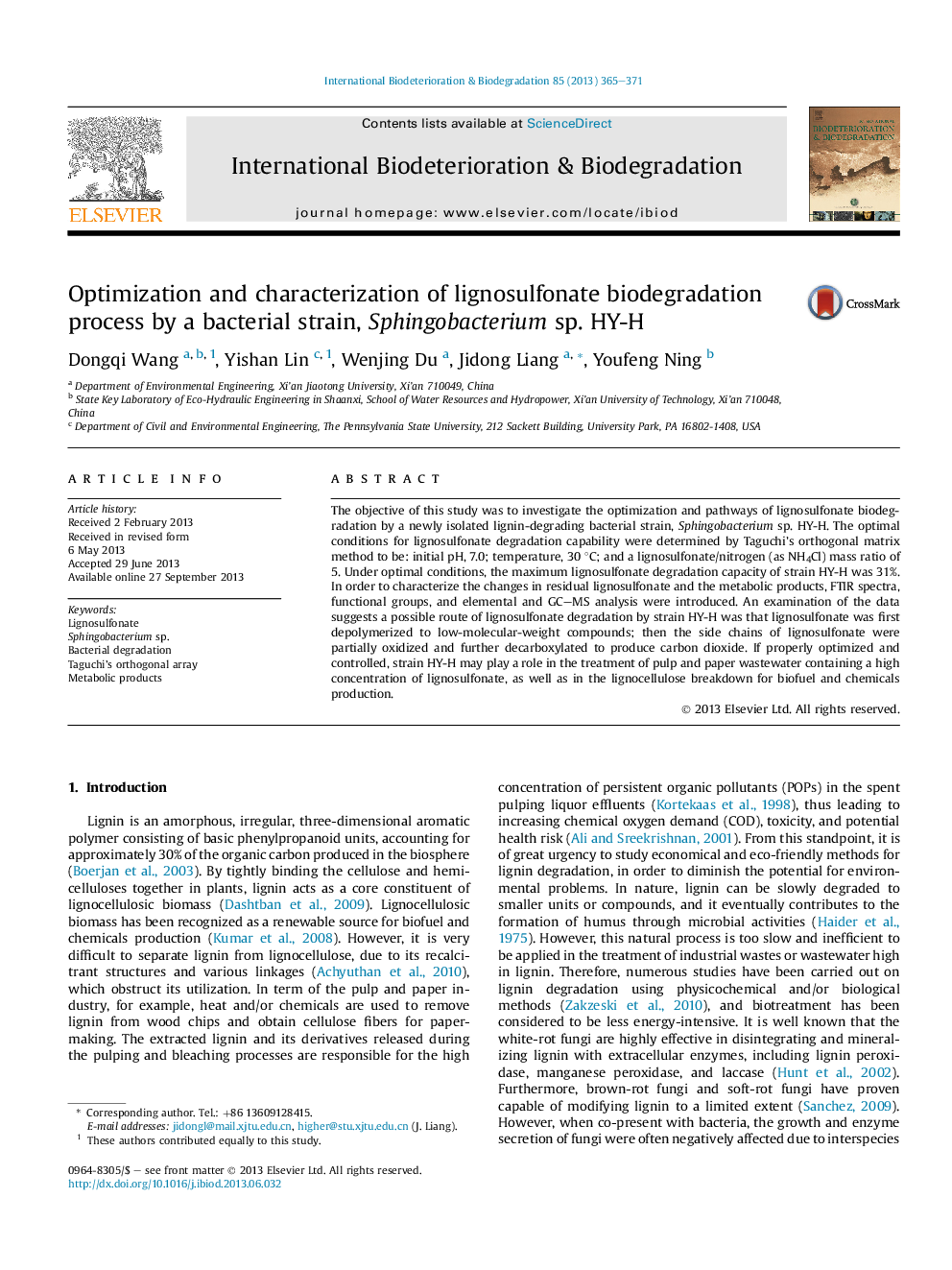| Article ID | Journal | Published Year | Pages | File Type |
|---|---|---|---|---|
| 6289327 | International Biodeterioration & Biodegradation | 2013 | 7 Pages |
Abstract
The objective of this study was to investigate the optimization and pathways of lignosulfonate biodegradation by a newly isolated lignin-degrading bacterial strain, Sphingobacterium sp. HY-H. The optimal conditions for lignosulfonate degradation capability were determined by Taguchi's orthogonal matrix method to be: initial pH, 7.0; temperature, 30 °C; and a lignosulfonate/nitrogen (as NH4Cl) mass ratio of 5. Under optimal conditions, the maximum lignosulfonate degradation capacity of strain HY-H was 31%. In order to characterize the changes in residual lignosulfonate and the metabolic products, FTIR spectra, functional groups, and elemental and GC-MS analysis were introduced. An examination of the data suggests a possible route of lignosulfonate degradation by strain HY-H was that lignosulfonate was first depolymerized to low-molecular-weight compounds; then the side chains of lignosulfonate were partially oxidized and further decarboxylated to produce carbon dioxide. If properly optimized and controlled, strain HY-H may play a role in the treatment of pulp and paper wastewater containing a high concentration of lignosulfonate, as well as in the lignocellulose breakdown for biofuel and chemicals production.
Related Topics
Life Sciences
Environmental Science
Environmental Science (General)
Authors
Dongqi Wang, Yishan Lin, Wenjing Du, Jidong Liang, Youfeng Ning,
